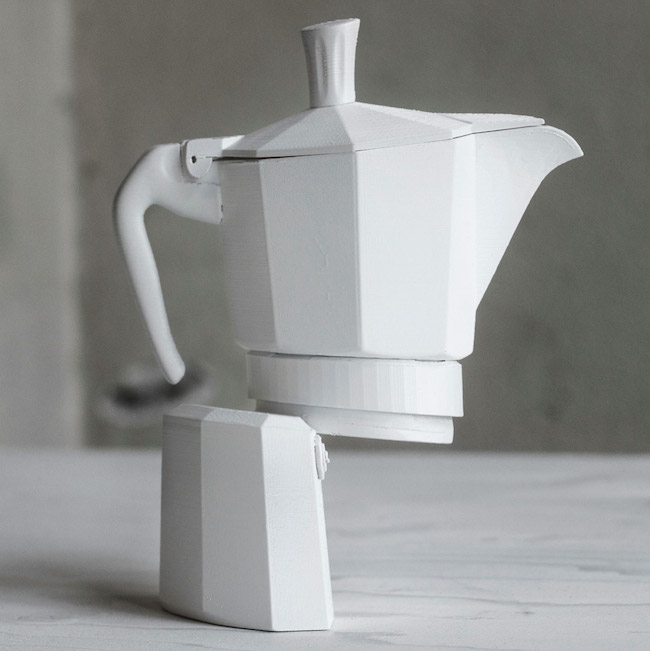Communication services such as Skype or FaceTime can eliminate some of the distance between friends and family, but Eindhoven-based designer Louisa Zahareas found a way to make that remaining divide a little smaller. Two of her projects, “Skype Dining Set” (2014) and “Screen Mutations” (2015) use contemporary ceramics to create the illusion of sharing a meal with someone while you’re speaking to them on a web cam. Rather than a snide comment about the artificiality of telecommunications, the sets instead seek to make those interactions a little better.
Though some parts of the concept are not practical for eating, Zahareas’ work responds to the reality of modern interaction in a practical way. Other than a conversation, one thing that increases feelings of togetherness is gathering around a shared activity. Sharing a meal is a powerful social ritual and her project attempts to trigger that response within the limiting factors inherent to screens. “Skype Dining Set” creates an optical illusion of a plate coming through the screen of one’s computer. It is, in actuality, four half-plates between both participants.
The plates in “Skype Dining Set” can be used for eating while the objects we’re about to talk about are more like props.
Zahareas expands on her idea with the follow-up project “Screen Mutations,” which was exhibited during Dutch Design Week and was a winner at the London International Creative Competition. Dinner items such as bowls, spoons, and teapots appear warped and strange on their own, but they look like tangible, familiar dining objects when observed over a web cam. The designer told Dezeen that she used forced perspective to achieve the illusion, creating some of the surreal designs on a computer and 3D-printing them before finalizing them in white porcelain. She collaborated with computational geometry expert Dianne Hansford for the project.

How “Screen Mutations” appear from the intended perspective.
The set are just props but the mutations do something a little more interesting than being mere vehicles for food. By filling out the illusion, the wares create a space that does not exist for either participant as an individual. It only has meaning as a shared third space. That space serves as a symbol of the connection the participants share. It’s ephemeral; the only thing sustaining it is the participants’ willingness to interact and play. In a way the set is synthetic, but the effect it achieves is honest and sincere. In an age where people question how authentic on-screen interactions are, Zahareas’ set urges us to reevaluate our biases and approach our digital reality with a little more creativity and good faith.
Zahareas graduated from the University of Minnesota from the Design in Architecture department in 2012. She worked as a freelance architect and designer for one year before going to Design Academy Eindhoven and obtaining a masters of social design in 2015.
Bill Rodgers is the Managing Editor of cfile.daily.
What do you think of Louisa Zahareas’ experiment with telecommunications and contemporary ceramics? Let us know in the comments.



Photographs and renderings courtesy of the designer.











Add your valued opinion to this post.